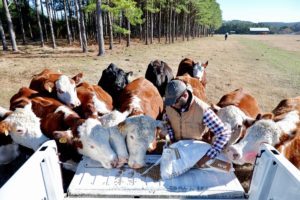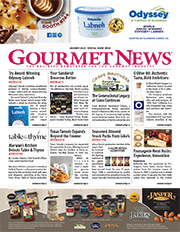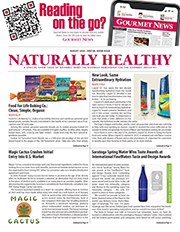USDA Issues Order on Avian Influenza in Dairy Cattle
 To further protect the U.S. livestock industry from the threat posed by highly pathogenic H5N1 avian influenza, USDA’s Animal and Plant Health Inspection Service announced a federal order requiring the measures effective Monday, April 29.
To further protect the U.S. livestock industry from the threat posed by highly pathogenic H5N1 avian influenza, USDA’s Animal and Plant Health Inspection Service announced a federal order requiring the measures effective Monday, April 29.
Mandatory Testing for Interstate Movement of Dairy Cattle
- Prior to interstate movement, dairy cattle are required to receive a negative test for Influenza A virus at an approved National Animal Health Laboratory Network laboratory.
- Owners of herds in which dairy cattle test positive for interstate movement will be required to provide epidemiological information, including animal movement tracing.
- Dairy cattle moving interstate must adhere to conditions specified by APHIS.
- As will be described in forthcoming guidance, these steps will be immediately required for lactating dairy cattle, while these requirements for other classes of dairy cattle will be based on scientific factors concerning the virus and its evolving risk profile.
Mandatory Reporting
- Laboratories and state veterinarians must report positive Influenza A nucleic acid detection diagnostic results (e.g. PCR or genetic sequencing) in livestock to USDA APHIS.
- Laboratories and state veterinarians must report positive Influenza A serology diagnostic results in livestock to USDA APHIS.
USDA has identified spread between cows within the same herd, spread from cows to poultry, spread between dairies associated with cattle movements, and cows without clinical signs that have tested positive. On April 16, APHIS microbiologists identified a shift in an H5N1 sample from a cow in Kansas that could indicate that the virus has an adaptation to mammals. Centers for Disease Control and Prevention conducted further analysis of the specimen sequence, which did not change their overall risk assessment for the general public, because the substitution has been seen previously in other mammalian infections and does not impact viral transmission. Additionally, APHIS’ National Veterinary Services Laboratories found H5N1 in a lung tissue sample from an asymptomatic cull dairy cow that originated from an affected herd and did not enter the food supply.
The novel movement of H5N1 between wild birds and dairy cows requires further testing and time to develop a critical understanding to support any future courses of action. This Federal Order is critical to increasing the information available for USDA. Requiring positive test reporting will help USDA better under this disease and testing before interstate movement will limit its spread.
Thus far, USDA has not found changes to the virus that would make it more transmissible to humans and between people. While cases among humans in direct contact with infected animals are possible, the U.S. Centers for Disease Control and Prevention believes that the current risk to the public remains low.
Additionally, ASDA continues to see affected cows recover after supported care with little to no associated mortality. The agency also continues to work with partners in the states and industry to emphasize the critical importance biosecurity plays in limiting disease spread for all livestock and poultry.
View the federal order.
In an effort to maximize understanding and research on H5N1 in dairy cattle, on April 21, APHIS made publicly available 239 genetic sequences from the U.S. H5N1 clade 2.3.4.4b influenza virus recently found in samples associated with the ongoing HPAI outbreak in poultry and wild birds, and the recent H5N1 event in dairy cattle. APHIS has also offered virus samples to interested researchers to facilitate epidemiological study. Increasing the understanding of this disease and how it spreads is critical to stopping it.
This is why APHIS is urging dairy cattle producers and those who work in or with the industry to share epidemiological information from affected farms, even if they are not planning to move cattle interstate. APHIS further urges producer participation in public health assessments to continue to confirm worker safety and monitor for any potential changes in the virus that could impact transmissibility.
In addition, the U.S. Food and Drug Administration released an update on the ongoing work to ensure continued effectiveness of the federal-state milk safety system. It is important to emphasize that, based on the information and research available to us at this time, the FDA and USDA believe that the commercial milk supply is safe because of both the pasteurization process and the required diversion or destruction of milk from sick cows.
Pasteurization has continuously proven to inactivate bacteria and viruses in milk. The FDA and USDA continue to work closely to collect and evaluate additional data and information specific to avian influenza in dairy cattle and to support state counterparts as this emerging disease in dairy cattle is managed.
As USDA continues to take steps to protect the health of livestock, the department continues to work closely with federal partners at the CDC on protecting the health of people and FDA on protecting the safety of the food supply. The U.S. government is committed to addressing this situation with urgency.
To learn more about USDA’s response to HPAI in dairy cattle, visit www.aphis.usda.gov/livestock-poultry-disease/avian/avian-influenza/hpai-detections/livestock.
For more news of interest to the livestock and dairy industries, subscribe to Gourmet News.
FTC: Consumers Still Paying for Pandemic Grocery Pricing
A Federal Trade Commission report revealed that large market participants accelerated and distorted the negative effects associated with grocery supply chain disruptions.
The FTC’s report examined how supply chain disruptions affected competition among retailers, wholesalers and producers, as well as the impacts on consumers and businesses. Consumers felt the negative effects of supply chain disruptions in the form of skyrocketing prices for groceries and product shortages for essentials, such as toilet paper.
Notably, consumers are still facing the negative impact of the pandemic’s price hikes, as the report finds that some in the grocery retail industry seem to have used rising costs as an opportunity to further raise prices to increase their profits, which remain elevated today.
“As the pandemic illustrated, a major shock to the supply chain can have cascading effects on consumers, including the prices they pay for groceries,” said FTC Chair Lina M. Khan. “The FTC’s report examining U.S. grocery supply chains finds that dominant firms used this moment to come out ahead at the expense of their competitors and the communities they serve.”
“The study found some indications that higher prices at the grocery store, which continued after the worst of the pandemic supply chain disruptions were resolved, were not simply mirroring the higher costs retailers faced, but actually may be reflective of higher profits for those retailers,” Commissioner Rebecca Kelly Slaughter said in a statement.
“Since the study found that some aspects of the supply chain disruptions we faced during the pandemic may have been harmful to competition, the indications that profits may have increased during the same time and remain high may be further indication that consumers are not benefiting from competitive markets in the ways they should when they do their grocery shopping.”
The report recommended further research on continued high pricing.
As the report explains, supply chain disruptions did not equally impact every retailer, wholesaler or producer. Instead, smaller firms – especially smaller grocery retailers – disproportionately faced difficulties obtaining products compared to larger firms. Some larger firms were better able to protect their product supply compared to smaller competitors.
The pandemic also prompted some larger firms to consider buying manufacturing suppliers, which potentially threatens to make certain supply chains even more concentrated in the future. Taken together, the report’s findings reveal how supply chain bottlenecks can leave markets exposed to major supply chain shocks and that those shocks, in turn, can allow major firms to entrench their dominance.
The report’s findings stem from orders the FTC issued in 2021 under Section 6(b) of the FTC Act to Walmart Inc., Amazon.com, Inc., Kroger Co., C&S Wholesale Grocers, Inc., Associated Wholesale Grocers, Inc., McLane Co, Inc. Procter & Gamble Co., Tyson Foods, Inc. and Kraft Heinz Co. The findings also draw from publicly available data on industry costs and revenues.
Competitive Impacts of Supply Chain Disruptions
The report highlights several key insights regarding market structure and business conduct among grocery retailers, wholesalers, and producers, as well as their effects on consumers. These insights include:
- Grocery retailer profits rose and remain elevated: Food and beverage retailer revenues increased to more than 6 percent over total costs in 2021, higher than their most recent peak in 2015 of 5.6 percent. In the first three-quarters of 2023, retailer profits rose even more, with revenue reaching 7 percent over total costs, casting doubt on the assertions of some companies that rising prices at the grocery store are the result of retailers’ own rising costs.
- Large purchasers sought favorable supplier allocations: Some companies, most often larger ones, re-imposed strict delivery requirements on their upstream suppliers during the height of the pandemic and threatened fines for noncompliance, pressuring suppliers to favor them over rivals. In some cases, suppliers preferentially allocated product to the purchasers threatening to fine, giving larger companies a competitive advantage over smaller retailers at a time when having products in stock was a critical advantage for attracting customers.
- Excessive consolidation recognized as a liability: During the pandemic, some retailers sought to diversify their supplier base, particularly of private label goods, as firms recognized the risks associated with having few suppliers available. Some firms buying goods in markets with few suppliers even began exploring whether to build or acquire manufacturing capacity to reduce their exposure to concentrated markets. The report warns, however, that moves by larger customers to buy one of the few remaining market participants rather than building that capability from scratch could leave the remaining buyers, notably smaller competing firms, even worse off.
- Decrease in promotional spending: During the pandemic, manufacturer promotional spending on items in short supply declined. Companies employing the more traditional grocery retailing model that relies on manufacturer promotional spending to lower prices for products sometimes faced higher prices compared to other companies. Companies that used an “Every Day Low Price” strategy, in which producers consistently provide low wholesale prices rather than short-term promotional price reductions, were less affected when manufacturer promotional spending was curtailed.
The Commission voted 3-0 to issue the staff report.
“In 2020 our nation faced several huge disruptions to our daily lives: primarily the fear for our health and safety from the threat of Covid-19, and the contrast between those sheltering in place and the essential workers braving dangerous conditions to keep things running,” Slaughter said.
“At the same time that we were reeling from those big changes, we quickly began to notice significant supply disruptions at the grocery store. These supply shocks were felt by so many of us, across the country.
“In 2021, the Biden Administration launched a systematic examination of supply chains in critical sectors of the economy. We greatly appreciate the work of other agencies and the White House, examining supply chain disruptions in semiconductors, clean energy, freight and logistics, defense, healthcare, and agriculture,” Slaughter said.
“As part of this effort, the FTC has examined the grocery supply chain. What we found was that throughout the supply chain, retailers, suppliers, distributors and raw materials suppliers had been prioritizing keeping costs low in the short term over long term resilience.
“Our grocery supply chain had been ‘optimized’ for good times. The priorities had been to minimize unused inventory and unmet demand, minimize storage space needs, and to be the most efficient. ‘Just in time’ stocking and obtaining key products from few sources or sometimes only a single source were fast and inexpensive strategies in the short term,” Slaughter said.
“But these systems were incredibly brittle. By relentlessly optimizing for leanness in our supply chain, businesses chose again and again short-term savings over our long-term resilience. In 2020, we saw the profound costs of these choices.
“This study shows many of the severe impacts that supply shocks had on this brittle, ‘efficient’ system. Widespread, substantial, sustained shortages, sometimes of critical goods that American families relied upon.
“Fortunately, the study also found that companies throughout the supply chain quickly realized the value of resilience, and are now considering ways to update the brittle sourcing system. They are now prioritizing resilience, not just short-term savings. Where they discovered they were relying on just one or two suppliers, they are now seeking out additional suppliers.”
For more news of interest to the grocery industry, subscribe to Gourmet News.
EU Parliament Clamps Down on Environmental Marketing Claims
 The European Union Parliament has adopted its position on establishing a verification and pre-approval system for environmental marketing claims to protect citizens from misleading ads:
The European Union Parliament has adopted its position on establishing a verification and pre-approval system for environmental marketing claims to protect citizens from misleading ads:-
Companies should submit environmental marketing claims like “biodegradable” or “less polluting” for verification before being allowed to use them
-
Simpler and common types of claims should benefit from easier or faster verification
-
Penalties include exclusion from procurement processes, confiscation of revenues, and a fine of at least 4% of annual turnover
The green claims directive would oblige companies to submit evidence about their environmental marketing claims before advertising products as “biodegradable”, “less polluting”, “water saving” or having “bio based content”. EU countries would have to assign verifiers to pre-approve the use of such claims, to protect buyers from unfounded and ambiguous advertising.
“Studies show that over 50 percent of environmental claims are vague, misleading or unfounded,” said Internal Market Committee rapporteur Andrus Ansip (Renew, EE) . “We cannot speak about happy consumers if every other green claim is false. We cannot talk about a level playing field for our entrepreneurs while some traders are cheating. I believe the Green Claims Directive adopted today is balanced – it will bring clarity to our consumers and is less burdensome for traders than the claim-by-claim verification.”
“It is time to put an end to greenwashing. Our position ends the proliferation of misleading green claims that have deceived consumers for far too long,” said Environment Committee rapporteur Cyrus Engerer (S&D, MT). “We will ensure businesses have the right tools to embrace genuine sustainability practices. European consumers want to make sustainable choices; all those offering products or services must guarantee their green claims are scientifically verified.”
Parliament wants claims and their evidence to be assessed within 30 days, but simpler claims and products could benefit from quicker or easier verification. Micro enterprises would not be covered by the new rules, and SMEs would have an extra year to be in compliance compared to larger businesses. Companies that break the rules may face penalties, for example they could be temporarily excluded from public procurement tenders, lose their revenues and face fines of at least at 4% of their annual turnover.
Green claims based solely on carbon offsetting schemes will remain banned. Companies could, however, mention offsetting and carbon removal schemes in their ads if they have already reduced their emissions as much as possible and use these schemes for residual emissions only. The carbon credits of the schemes must be certified and be of high integrity, such as those established under the Carbon Removals Certification Framework.
Parliament also decided that green claims about products containing hazardous substances should remain possible for now, but the Commission should assess in the near future whether they should be banned entirely.
Parliament adopted its first reading position with 467 votes to 65 and 74 abstentions. The file will now have to be followed up by the new Parliament after the European elections that will take place in from 6 – 9 June 2024.
In adopting this report, Parliament is responding to citizens’ expectations for the EU to introduce transparent labeling for all products regarding their sustainability and environmental footprint, and to raise awareness among both companies and citizens on how to behave in a more sustainable manner, as expressed in proposals 5(1) and 11(8) of the conclusions of the Conference on the Future of Europe.
For more news of interest to the specialty food industry, subscribe to Gourmet News.








